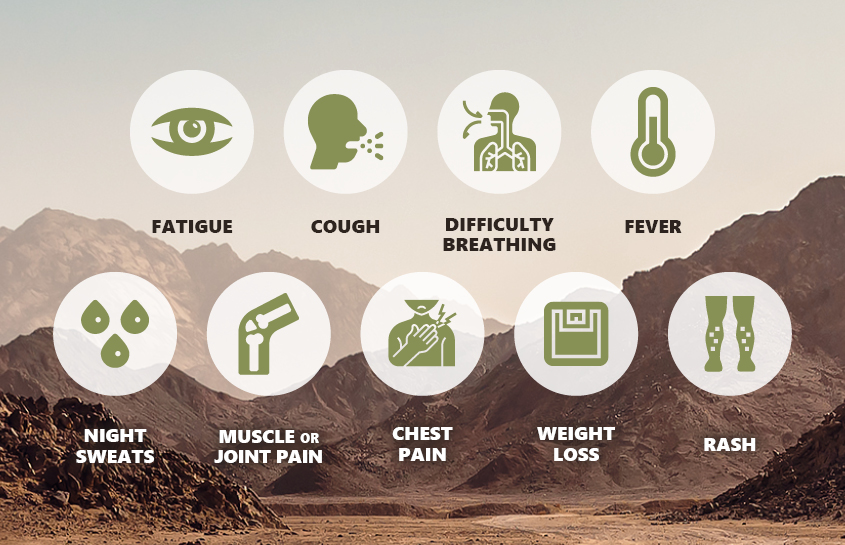Symptoms of Valley Fever
Not everyone who gets Valley fever will have symptoms because their bodies will fight off the infection naturally.
Most people who do get sick with Valley fever have respiratory symptoms or pneumonia because the Valley fever fungus usually infects the lungs. Common symptoms that may develop 1 to 3 weeks after breathing in the fungus include: fatigue (exhaustion), cough, difficulty breathing, night sweats, muscle or joint pain, fever, chest pain, weight loss, and rash or bumps on the skin (especially on the front of the legs).
Valley fever symptoms usually last a few weeks to a few months.
